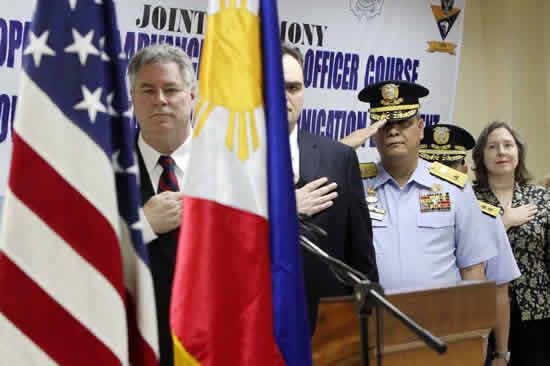
According to Associated Press reports today, the Philippine military has killed Southeast Asia?s most-wanted terrorist on Thursday. With U.S. support, two OV-10 aircraft bombed a terrorist stronghold, comprising militants from the al-Qaeda-affiliated groups Abu Sayyaf and Jemaah Islamiyah (JI). When the dust settled, Malaysian terrorist Zulkifli bin Hir, known by his nom-de-guerre ?Marwan,? was among the rubble, along with two senior leaders of Abu Sayyaf and JI.
This is a big victory for the Philippine military and its U.S. trainers. In 2002, the U.S. military deployed 600 non-combat counterinsurgency specialists known as the Joint Special Operations Task Force-Philippines (JSOTF-P). Comprised of Army Special Forces and Navy SEALs, the unit?s primary mission has been to train and develop the Philippine military?s counterinsurgency and counterterrorism capabilities. The result is that the U.S.-backed Philippine military has turned the tide in the war against Abu Sayyaf, largely decimating its leadership in 2007 and restricting the terrorist group to small-scale attacks.
Operations like this demonstrate that it continues to be money well spent. As noncombatants, the U.S. military force provided critical intelligence support that led to the mission?s success, according to a Philippine armed forces spokesman. It?s a recipe for success that has proven extremely effective time and again, as in the case of the hugely successful U.S. and Australian-funded Detachment 88 counterterrorist force in Indonesia.
Regarding the militants killed, Marwan, a U.S.-educated Malaysian engineer, was a top leader of JI and also formed a terrorist group in Malaysia, the Kumpulun Mujahidin Malyasia. He coordinated closely with Abu Sayyaf as their top trainer in bomb-making, and he was a close associate of Umar Patek, a JI leader arrested in Abbottabad a few months before the bin Laden raid. He was on the FBI?s Most Wanted List with a $5 million bounty on his head.
Also killed were Umbra Jumdail, also known as Dr. Abu Pala, one of the founding members of Abu Sayyaf. He is believed to be responsible for multiple kidnappings, beheadings, and atrocious violence around Mindanao Province. Finally, the air strike killed Abdullah Ali, also known as Muawiyah, a Singaporean senior leader of JI believed to be involved in the 2002 Bali bombings that killed more than 200 people.
Yet the job is not finished. Terrorism may be down in Southeast Asia, but it is certainly not out. Just as the death of Osama bin Laden did not end the threat from al-Qaeda, Abu Sayyaf and JI still remain extremely dangerous, even without their top leaders. Despite their largely regional focus, Southeast Asia?s terrorist cells can still threaten U.S. interests and American lives if given the space to operate.
JSOTF-P costs around $50 million per year, a drop in the bucket when looking at its cost-benefit ratio. As Washington continues to gut defense spending, the Pentagon should not slice a penny from this program?not so long as the Philippine government wants us involved. The U.S. training force has proven to be one of the true success stories in the global war against terrorists.
Much has been written lately on the U.S. and the Philippines expanding defense cooperation with an eye toward securing Philippine territorial sovereignty in the South China Sea. As the Philippine military quells domestic insurgencies and eradicates terrorist cells in its territory, it will increasingly be able to turn its attention outward, toward territorial defense. The U.S. should continue to do everything in its power, pursuant with the U.S.?Philippines Mutual Defense Treaty, its Visiting Forces Agreement, and the Constitution of the Philippines to assist our treaty ally in this endeavor.
luck undercover boss sag awards 2012 nominees sag awards yamaguchi pro bowl 2012 roster road house
কোন মন্তব্য নেই:
একটি মন্তব্য পোস্ট করুন